Business
Farmers are being squeezed – it’s testing their loyalty to Trump

Luke MintzBBC News and
Anna JonesPresenter of Corn Belt People
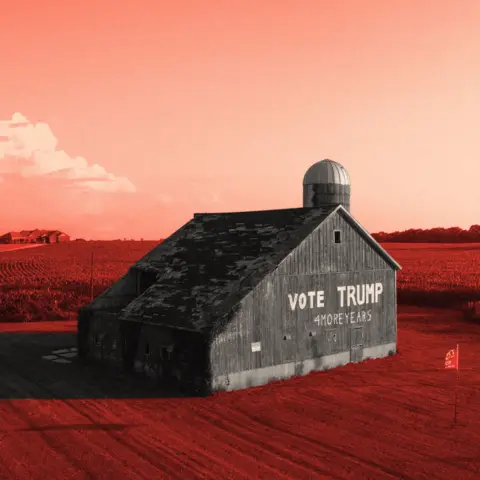 BBC
BBCOn a scorchingly hot day in the American Midwest, Tim Maxwell is voicing his fears about the future of farming.
The 65-year-old has worked the fields since he was a teenager. He now owns a grain and hog farm near Moscow, Iowa – but he’s unsure about its prospects.
“I’m in a little bit of a worried place,” says Mr Maxwell, who wears a baseball cap bearing the logo of a corn company.
He is concerned that American farmers aren’t able to sell their crops to international markets in the way they could in previous years, in part because of the fallout from President Trump’s tariffs.
“Our yields, crops and weather are pretty good – but our [interest from] markets right now is on a low,” he says. “It’s going to put stress on some farmers.”
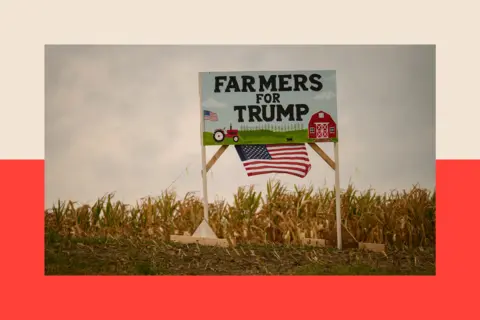 Bloomberg via Getty Images
Bloomberg via Getty ImagesHis fears are not unique. US agricultural groups warn that American farmers are facing widespread difficulty this year, mostly due to economic tensions with China. Since April, the two countries have been locked in a trade war, causing a sharp fall in the number of Chinese orders for American crops.
American farmers are wounded as a result, economists say. The number of small business bankruptcies filed by farmers has reached a five-year high, according to data compiled by Bloomberg in July.
With all this economic pain, rural areas could well have turned against Trump. But that doesn’t seem to be happening.
Rural Americans were one of the president’s most loyal voting blocs in last year’s election, when he won the group by 40 percentage points over Kamala Harris, beating his own margins in 2020 and 2016, according to Pew Research analysis.
Polling experts say that in the countryside, he is still broadly popular.

Mr Maxwell says he is sticking with Trump, despite his own financial worries. “Our president told us it was going to take time to get all these tariffs in place,” he says.
“I am going to be patient. I believe in our president.”
So why do so many farmers and other rural Americans broadly continue to back Trump even while feeling an economic squeeze that is driven in part by tariffs – the president’s signature policy?
Farmers on a ‘trade and financial precipice’
If you want a window into rural America, the Iowa State Fair is a good start. The agricultural show attracts more than one million visitors over 10 days.
There is candy floss; deep-fried hot dogs on a stick for $7 (£5) – known as “corn dogs”; an antique tractor show; a competition for the biggest boar.
But when the BBC visited last month, there was another topic of conversation: tariffs.

“A lot of people say he’s just using tariffs as a bargaining chip, as a bluff,” says Gil Gullickson, who owns a farm in South Dakota and edits an agriculture magazine.
“But I can say: history proves that tariffs don’t end well.”
In April, what he termed “liberation day”, Trump imposed sweeping tariffs on most of the world, including a 145% tariff on China.
In response, China put a retaliatory 125% tariff on American goods – a blow to farmers in the American Midwest, sometimes known as the “corn belt”, many of whom sell crops to China.
Last year Chinese companies bought $12.7bn (£9.4bn) worth of soybeans from America, mostly to feed their livestock.
September is harvest season, and the American Soybean Association (ASA) has warned that soybean orders from China are way below where they should be at this point in the year.

Tariffs have fluctuated dramatically since they were introduced – and the uncertainty is proving tough for farmers, says Christopher Wolf, a professor of agricultural economics at Cornell University.
“China is just so big that when they buy things, it matters – and when they don’t, it matters.”
The cost of fertiliser has rocketed, too – partly because of trade disputes with Canada, which has raised the cost of potash, a salt imported from Canada by American farmers and used in fertiliser.
Jon Tester, a former Democrat Senator of Montana, who is a third-generation farmer, told a US news station earlier this month: “With all these tariffs the president’s put on, it’s interrupted our supply chain… it’s increased the cost of new equipment… and because of the trade and tariffs, a lot of customers have said to heck with the United States…
“The people who are new to agriculture, those young farmers who haven’t saved money for times like this, they’re going to be in trouble and a lot of those folks are going to go broke.
“And if this continues, a lot of folks like me are going to go broke too.”
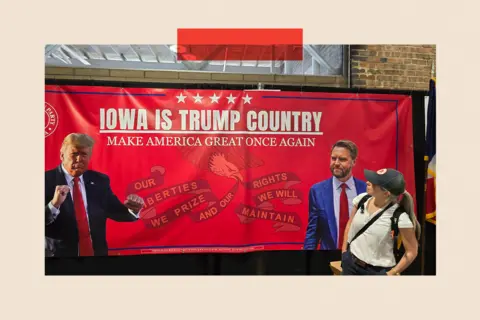
American farmers already suffer from high levels of stress. They are more than three times more likely than average to die by suicide, according to a paper by a charity, the National Rural Health Association, which analysed a period before Trump’s presidency.
In a letter to the White House, Caleb Ragland, president of the ASA, warned of a tipping point: “US soybean farmers are standing at a trade and financial precipice.”
Trump: ‘Our farmers are going to have a field day’
Supporters of President Trump say that his tariffs will help American farmers in the long run, by forcing countries like China to come to the negotiating table and agree new deals with the US over agriculture.
And they point to other ways this White House has helped farmers. Over the summer, as part of Trump’s tax and spend bill, his administration expanded federal subsidies for farmers by $60bn (£44bn), and boosted funding for federal crop insurance.
In his annual speech to Congress in March, Trump warned farmers of a “little bit of an adjustment period” following the tariffs, adding: “Our farmers are going to have a field day… to our farmers, have a lot of fun, I love you.”
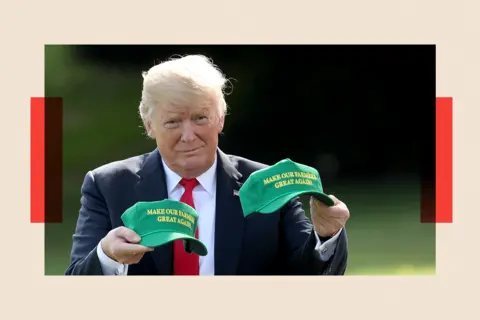 Getty Images
Getty ImagesSid Miller, commissioner of the Texas Department of Agriculture, is among those who have praised Trump for his “vital support”.
“We finally have an administration that is prioritising farmers and ranchers,” he wrote in a statement earlier this year. “They advocate for farmers, challenge China … and ensure America’s producers are receiving fair treatment.”
And it is possible the president’s tariff strategy could eventually work, according to Michael Langemeier, a professor of agricultural economics at Purdue University.
But he also worries that uncertainty is inflicting long-term damage. “Your trading partner doesn’t know exactly what your position’s going to be next year, because it seems like we’re changing the goalposts.
“That is a problem.”
Tariffs will make us great again
There’s an old adage in American politics that says people “vote with their pocketbooks” – and turn against politicians if they appear to harm their finances.
Yet despite financial pressures, the rural Americans we spoke to are firmly sticking with Trump.
Experts say they haven’t seen any evidence of meaningful change in support among rural voters since last year. A survey by Pew last month found that 53% of rural Americans approve of the job Trump is doing, far higher than the 38% figure for the country as a whole.
Though a survey by ActiVote earlier this month did find a small decline in Trump’s approval among rural voters from 59% in August to 54% in September. Analysts warn not to pay too much attention to those shifts, however, because the number of rural voters included in those polls is so small.
“The data I’ve seen suggests Trump is still heavily supported in rural communities,” says Michael Shepherd, a political science professor at the University of Michigan who focuses on rural politics.

For some farmers at the state fair, the explanation is simple: they believe the US president when he tells them that tariffs will help them in the long run.
“We think the tariffs eventually will make us great again,” says John Maxwell, a dairy farmer and cheese producer from Iowa.
“We were giving China a lot, and [previously] we paid tariffs when we sold to them. Let’s make it fair. What’s good for the goose is good for the other goose.”
Some may also hold onto hope that the president will bail farmers out. During Trump’s first term he gave farmers a $28bn (£20.7bn) grant amid a tariff dispute with China.
A case of selective blame attribution?
For Nicholas Jacobs, a politics professor at Colby College and author of The Rural Voter, there’s a deeper reason at play.
“It’s easy for an outsider to ask, ‘Why the hell are you still with this guy?'” he says. “But you have to understand that across rural America, the move towards Republicans long predates Donald Trump.”
Starting in the 1980s, he says, rural Americans started to feel alienated and left behind while cities benefited from globalisation and technological change.
What he calls a “rural identity” formed, based on a shared grievance and an opposition to urban liberals. The Republicans seemed like their natural champion, while he says the Democrats became “the party of the elite, technocrats, the well-educated, the urbane”.
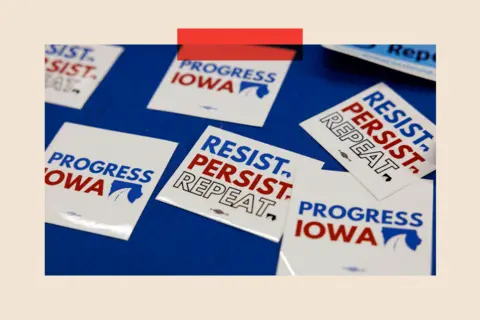 Bloomberg via Getty Images
Bloomberg via Getty ImagesSome repeat that sentiment at the state fair. Joan Maxwell, a dairy farmer from Davenport in Iowa, says that her area is too often viewed as “flyover country”.
“We are not looked at very positively for the most part from the media,” she says. “We’ve been called deplorables, uneducated,” – a reference to Hillary Clinton’s description of half of Trump’s supporters as a “basket of deplorables”.
Ms Maxwell added: “A lot of times they ignore us or make fun of us.”
Prof Shepherd, of Michigan University, believes there’s another factor: in his view, America has become so polarised – with voters from both sides entrenched in their camps – that many are willing to forgive much more than they would previously, as long as it’s a policy implemented by their own side.
He calls this “selective blame attribution… they might be really angry about some things that are happening, but they’re reticent to blame Trump for them.”
‘We’re giving him a chance – there’d better be results’
Mr Wolf has his own view on the “best case scenario” from here. “What I hope happens is that he [Trump] just declares victory and leaves it [tariffs] alone.”
But he warns that even if the policy is dropped, the damage to American farmers could be long-term due to the shake-up to supply chains. Some Chinese firms are now buying their soybeans from Brazil rather than America, he says; they may not quickly return.
Many of the analysts we spoke to believe that rural America’s support for Trump is not a blank cheque, despite their current support.

Mr Shepherd points to the Great Depression and rural “Dustbowl” of the 1930s, which forced millions of farmers to migrate to American cities, causing a long-term realignment in politics – though nobody expects it to get anywhere near that bad this time. The farm crisis of the 1980s also saw thousands of farms go under.
Back at the state fair, Ms Maxwell, the Iowan dairy farmer, makes this point clear.
“We’re giving him the chance to follow through with the tariffs, but there had better be results. I think we need to be seeing something in 18 months or less.
“We understand risk – and it had better pay off.”
Additional reporting: Florence Freeman
BBC InDepth is the new home on the website and app for the best analysis and expertise from our top journalists. Under a distinctive new brand, we’ll bring you fresh perspectives that challenge assumptions, and deep reporting on the biggest issues to help you make sense of a complex world. And we’ll be showcasing thought-provoking content from across BBC Sounds and iPlayer too. We’re starting small but thinking big, and we want to know what you think – you can send us your feedback by clicking on the button below.
Business
US markets today: Wall Street drifts near record highs as Big Tech results; Trump-Xi trade talks pull investors in both directions – The Times of India

US markets ended mixed on Thursday, with investors juggling upbeat and cautious signals from Big Tech earnings and renewed optimism around US-China trade ties.The S&P 500 slipped 0.2% from its all-time high earlier this week, while the Nasdaq composite lost 0.6%. The Dow Jones Industrial Average, however, gained 199 points, or 0.5%, by mid-morning trade, AP reported.Markets were reacting to comments from US President Donald Trump, who called his meeting with Chinese President Xi Jinping a “12 out of 10” and announced plans to reduce tariffs on Chinese goods. Analysts, however, warned that despite the warm rhetoric, structural trade tensions remain unresolved.“The result was fine, but fine isn’t good enough given the expectations going in,” said Brian Jacobsen, chief economist at Annex Wealth Management. “The results were more like small gestures instead of a grand bargain.”Big Tech weighs on sentimentTech stocks saw sharp divergences after earnings. Meta Platforms tumbled 11.3%, wiping off part of its 28% gain this year, as investors reacted to higher spending plans for 2026. Microsoft fell 2.5% despite reporting stronger quarterly earnings and revenue, with concerns about slower Azure growth and rising investment costs.Alphabet bucked the trend, rising 5.3% after reporting better-than-expected profit and revenue. Together, Alphabet, Meta, and Microsoft make up nearly 14.5% of the S&P 500’s total market value — meaning their moves can swing the broader market.Broader movers and macro watchChipotle Mexican Grill slumped 18% after trimming its sales growth forecast, citing “persistent macroeconomic pressures.” In contrast, Eli Lilly rose 1.7% as strong sales of its diabetes and obesity drugs Mounjaro and Zepbound boosted profits, prompting an upward revision to its annual guidance.Sherwin-Williams gained 2% after beating profit estimates despite a “softer for longer” demand outlook, while Visa advanced 1.5% on stronger-than-expected results.Fed caution lifts bond yieldsThe 10-year US Treasury yield rose to 4.09% from 4.08% the day before, after Federal Reserve Chair Jerome Powell said a December rate cut “is not a foregone conclusion.” Traders still expect a rate reduction later this year, but with less certainty, according to CME Group data.In Europe, France’s CAC 40 dropped 0.9% and Germany’s DAX shed 0.2% after the European Central Bank held rates steady. Japan’s Nikkei 225 closed nearly flat after the Bank of Japan also kept its policy unchanged
Business
Former Asda boss Roger Burnley appointed director at M&S

Former Asda boss Roger Burnley is to join the board of Marks & Spencer.
He will become a non-executive director of the high street giant from December 1, the company told shareholders on Thursday.
The retail veteran was the boss of rival Asda from 2017 until 2021, when he left the business following its £6.8 billion takeover by the Issa brothers and TDR Capital.
He was retail operations director at Sainsbury’s before moving to Asda and is currently a non-executive director at Pets at Home.
Mr Burnley will become the latest supermarket heavyweight to join the business, after former Sainsbury’s boss Justin King stepped down earlier this year.
Mr King left the board in September after around six years.
The appointment comes after a turbulent year for Marks & Spencer after it was hit by a major cyber attack which forced it to shut down online sales for around six weeks.
It said the attack has cost the company around £300 million.
Mr Burnley said: “M&S is a much-loved brand which I have always admired as setting the standard in UK retail, and it is a privilege to be joining such an engaged board.
“Much progress has been made through the reshaping for growth strategy, but there remains so much opportunity, and I am looking forward to supporting the leadership team to capitalise on that in the years ahead.”
M&S chairman Archie Norman said: “Roger brings extensive experience in the food retail industry and supply chain transformation which will be invaluable as we enter the next phase of our plan to reshape M&S for growth.
Business
Ashwini Vaishnaw Approves Plan For 76 Passenger Areas At Railway Stations To Enhance Travel Comfort
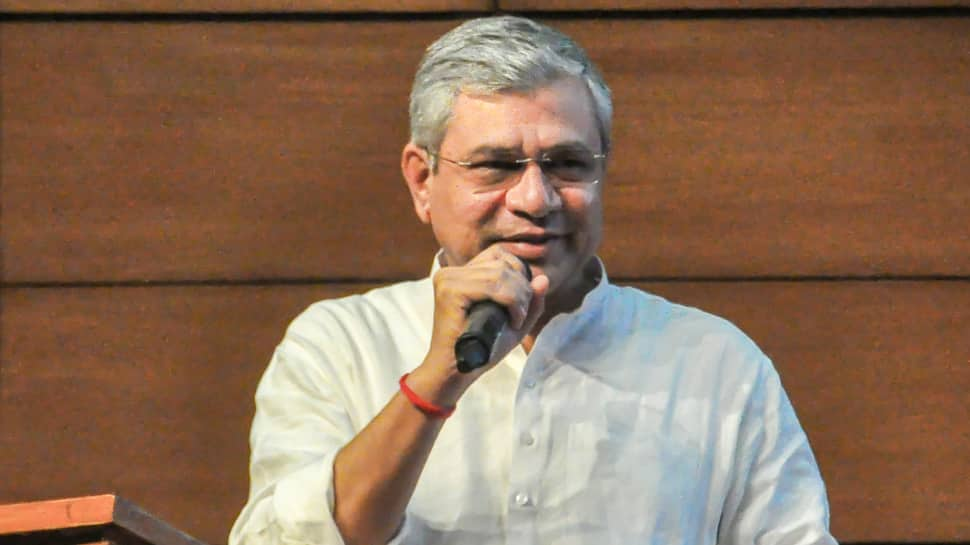
New Delhi: Union Minister for Railways Ashwini Vaishnaw has approved a plan for developing 76 new passenger holding areas at various railway stations across the country ahead of the 2026 festival season. The decision was taken following the success of the passenger holding area at New Delhi Railway Station, which enhanced the pre-boarding comfort for travellers, according to an official statement issued on Thursday.
The new holding areas planned across the country will follow a modular design and will be constructed keeping in view local conditions. The Union Minister has directed that all holding areas should be completed well before the 2026 festival season, the statement said.
The New Delhi station managed the extremely heavy rush of passengers during Diwali and Chhath with the help of its newly developed holding area, which was completed within four months.
The Yatri Suvidha Kendra (permanent holding area) at New Delhi Railway Station is designed to accommodate approximately 7,000 passengers at any given time, significantly enhancing pre-boarding comfort and passenger flow.
The facility is strategically divided into three zones – Ticketing, Post-Ticketing, and Pre-Ticketing – to streamline passenger movement. The New Delhi station holding area can accommodate over 7,000 passengers and is equipped with 150 toilets, each for men and women, ticket counters, automatic ticket vending machines, and free RO water facilities.
Indian Railways had also run as many as 7,800 extra trains to clear the surge in passenger traffic for Diwali and Chhath, and set up War Rooms to monitor the festive rush.
Vaishnaw paid a surprise visit to the New Delhi Railway Station and conducted an on-ground assessment of the arrangements made for passengers during the festive season.
Indian Railways established a dedicated “War Room” at Rail Bhawan to monitor and manage the massive influx of festive travellers. This command centre enabled real-time monitoring and allowed officials to quickly address congestion, passenger complaints, and potential incidents, the minister said.
The war room has evolved into an effective system overseeing the entire Indian Railways network, as over 80 war rooms were active at the Railway Board, zonal, and divisional levels, according to an official statement.
-

 Tech1 week ago
Tech1 week agoThis Smart Warming Mug Is Marked Down by $60
-

 Politics5 days ago
Politics5 days agoTrump slams ‘dirty’ Canada despite withdrawal of Reagan ad
-

 Tech6 days ago
Tech6 days agoDefect passivation strategy sets new performance benchmark for Sb₂S₃ solar cells
-

 Tech1 week ago
Tech1 week agoAn Amazon outage has rattled the internet. A computer scientist explains why the ‘cloud’ needs to change
-
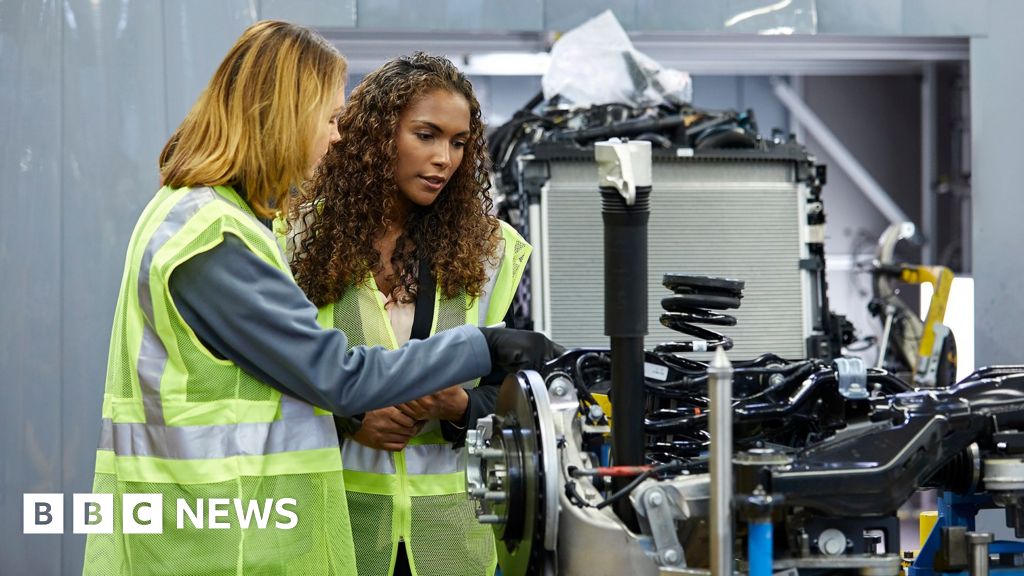
 Business7 days ago
Business7 days agoJLR shutdown after cyber hack drives slump in UK car production
-

 Tech1 week ago
Tech1 week agoTurning pollution into clean fuel with stable methane production from carbon dioxide
-

 Business1 week ago
Business1 week agoMattel misses Wall Street estimates as North American sales sink
-

 Sports6 days ago
Sports6 days agoAlleged mob ties in NBA scandal recall La Cosa Nostra’s long shadow over sports







